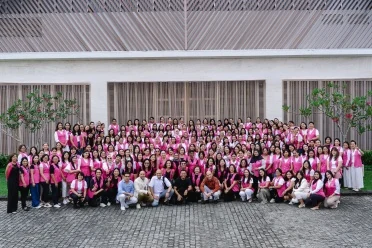Bali island is home to numerous natural and mystical attractions. Among these is the Bunut Bolong tree, a unique and ancient tree located in Manggisari Village, Pekutatan District, Jembrana Regency. This remarkable tree, with a large hole at its base serving as a roadway, stands as a testament to the island's spiritual and historical significance. Here’s everything you need to know about the sacred tree, its myths, and why it should be on your travel itinerary.
Myth of The Evergreen: Bunut Bolong Sacred Tree
Hidden in the Heart of Western Bali
Bunut Bolong is situated in the western part of Bali, about a three-hour drive from Denpasar or Kuta. The tree is more than just a natural wonder; it connects the Jembrana and Buleleng districts, offering a scenic route through its massive hollow base. Surrounded by lush forests, this area is a haven for nature lovers and those seeking a serene escape.
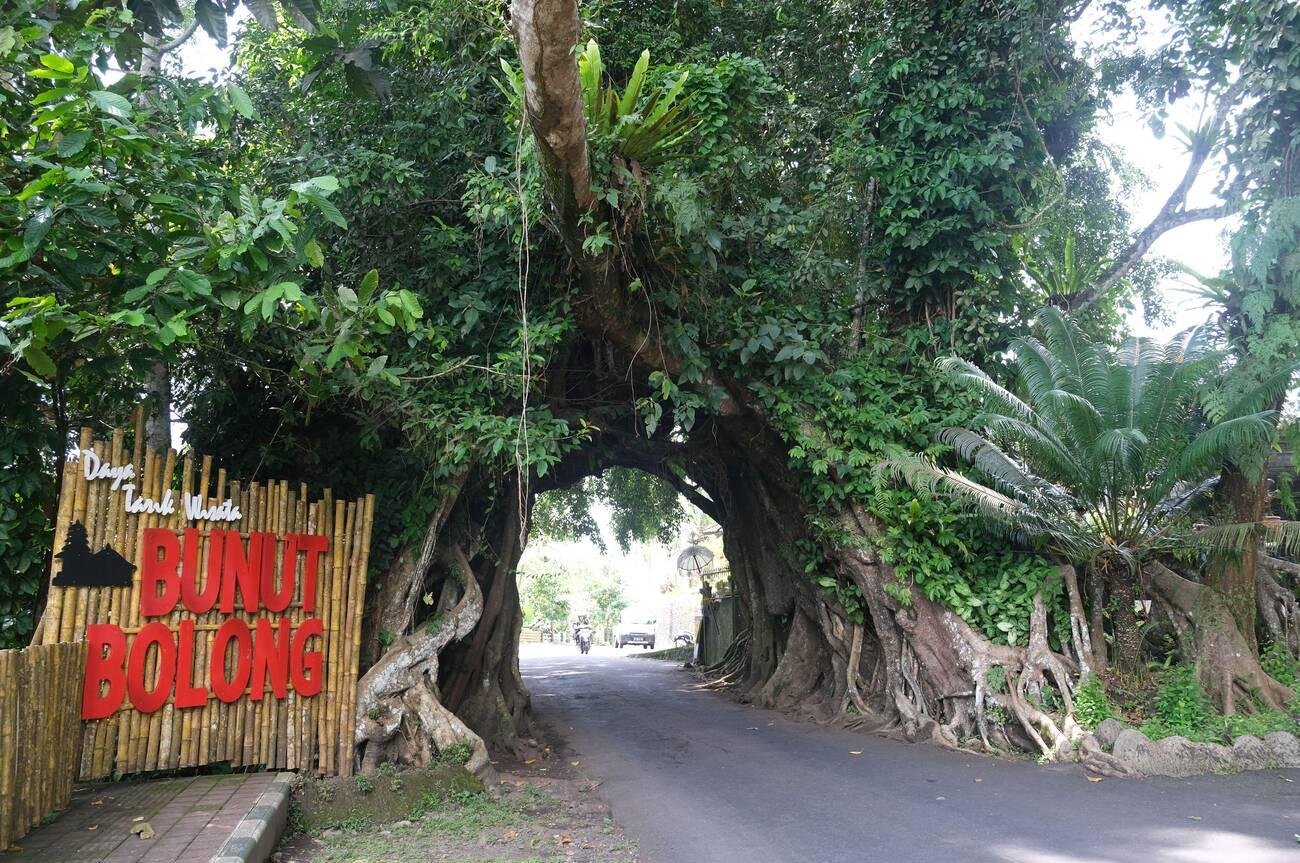
Decoding the Name
The name "Bunut Bolong" translates to "Bunut tree with a hole," where "Bunut" refers to a type of tree similar to the banyan, and "Bolong" means hole. This name perfectly describes the tree’s most striking feature—a large hole formed by its roots, creating a natural tunnel wide enough for vehicles to pass through.
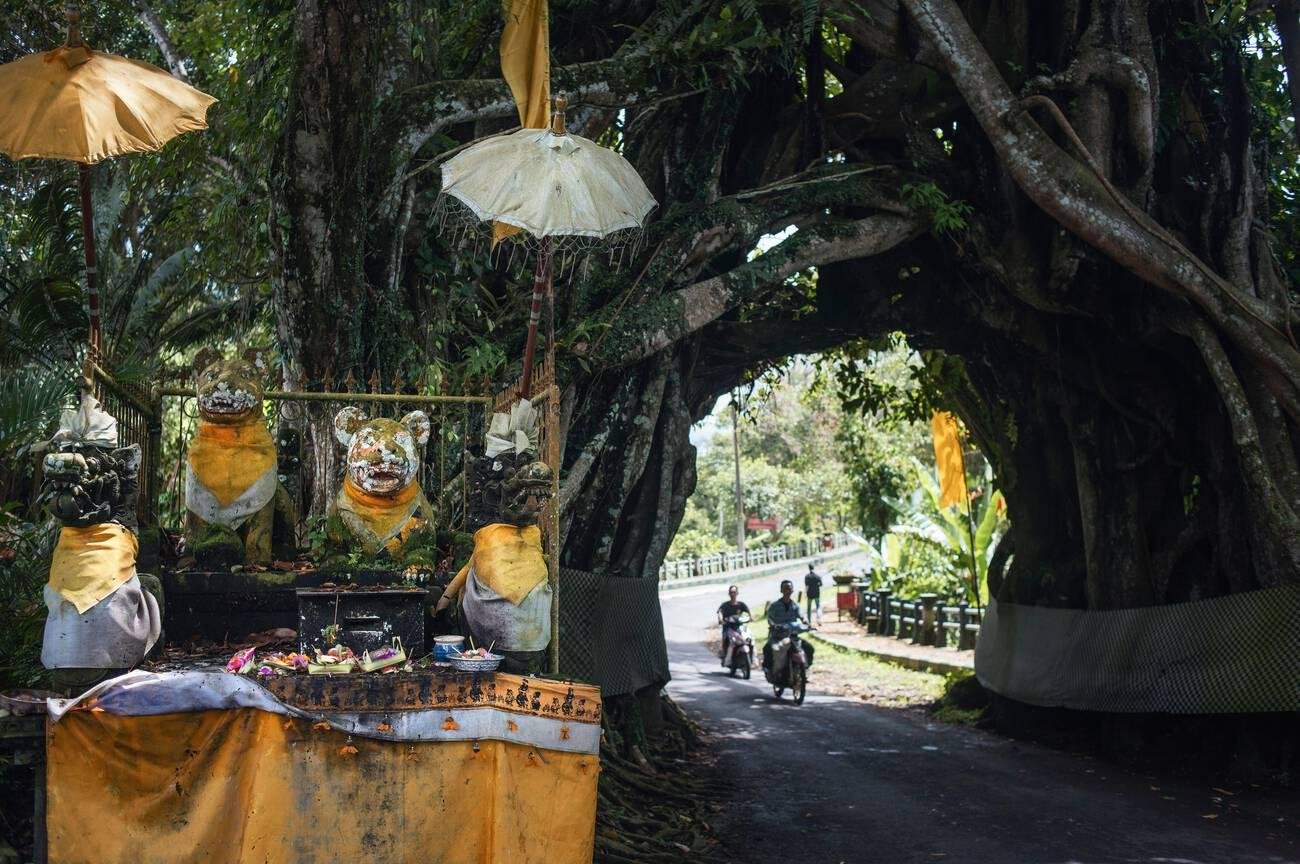
Nature's Ageless Marvel
Bunut Bolong is estimated to be over a century old, characterized by its enormous size and the intriguing hole at its base. The roots of the tree hang down and merge with the ground, creating new trunks and enhancing its mystical appearance. This natural phenomenon is rare and captivating, making it a must-see attraction for visitors to Bali.
Protective Sacred Entity
The Bunut Bolong tree is steeped in local myths and legends. It is believed to possess powerful spiritual energies and serve as a protective entity for the village. One of the most well-known stories dates back to 1928, when the village was plagued by a deadly disease. The village elders meditated under the Bunut Bolong tree and received spiritual guidance to relocate their settlement from the north to the south of the tree. Following this move, the disease mysteriously subsided, reinforcing the belief in the tree's magical powers.
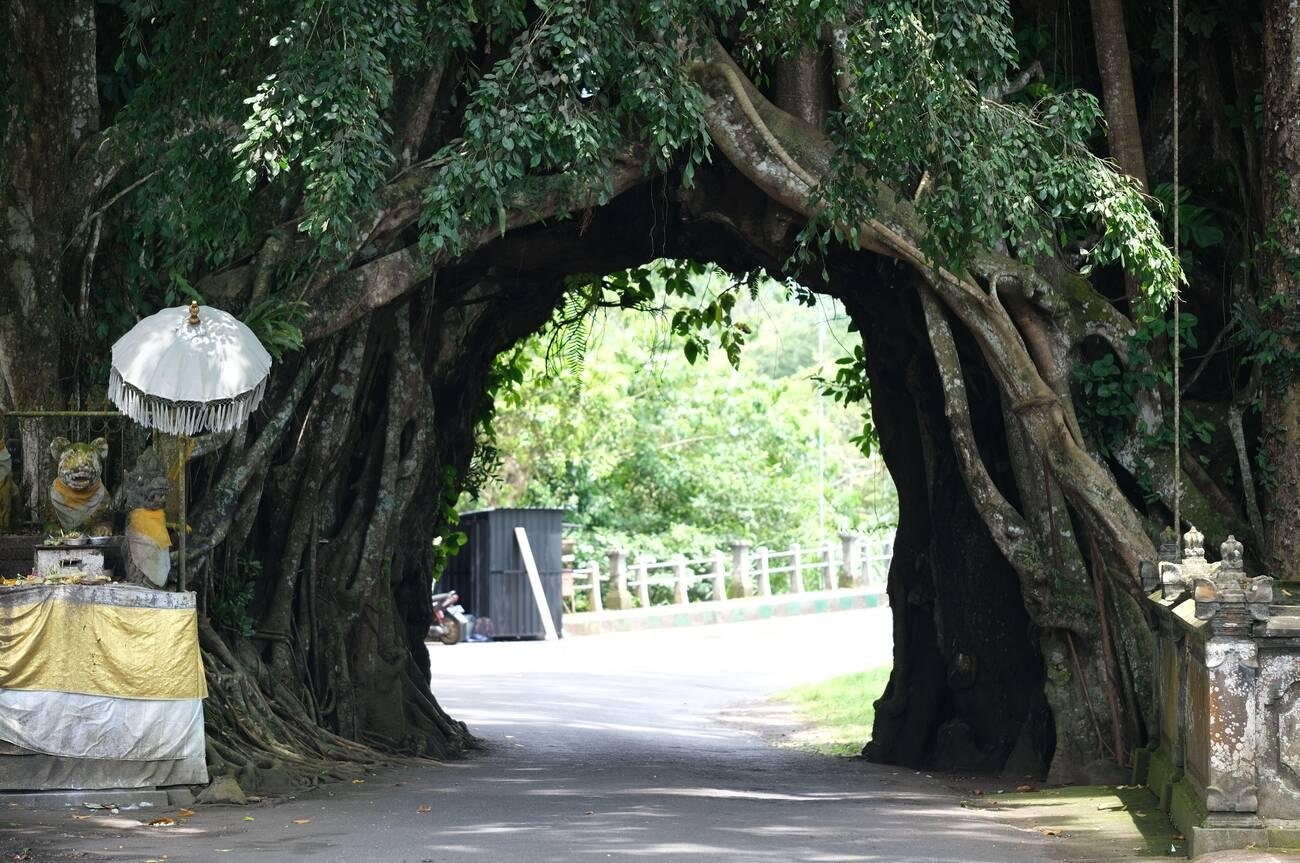
Taboos and Prohibitions
Several taboos surround the Bunut Bolong tree, reflecting its revered status in local culture. Newlyweds and honeymooning couples are advised against passing through the tree's tunnel, as it is believed to bring bad luck or even lead to separation. Funeral processions are also forbidden from passing through the tree, and alternative routes are used to respect these ancient beliefs. Locals adhere to these taboos to avoid misfortune and honor the tree's sacred nature.
Journey Through Time
Visiting Bunut Bolong offers a glimpse into Bali's natural beauty and spiritual traditions. If you plan to visit, it’s recommended to also explore nearby attractions such as the Rambut Siwi Temple and the Dharma Giri Monastery, enhancing your experience of Bali's western region. For a hassle-free trip, consider using Bali Tour’s Car Charter service, which provides comfortable transportation and knowledgeable drivers to guide you through this mystical journey.
Guardians of Heritage
Despite modern developments, efforts to alter or cut down the Bunut Bolong tree have been met with mysterious and often tragic events, leading locals to preserve the tree in its natural state. The tree remains adorned with black-and-white checkered cloth, symbolizing its sacredness and the presence of a guardian spirit. Visitors are encouraged to respect the cultural and spiritual significance of the Bunut Bolong tree during their visit.
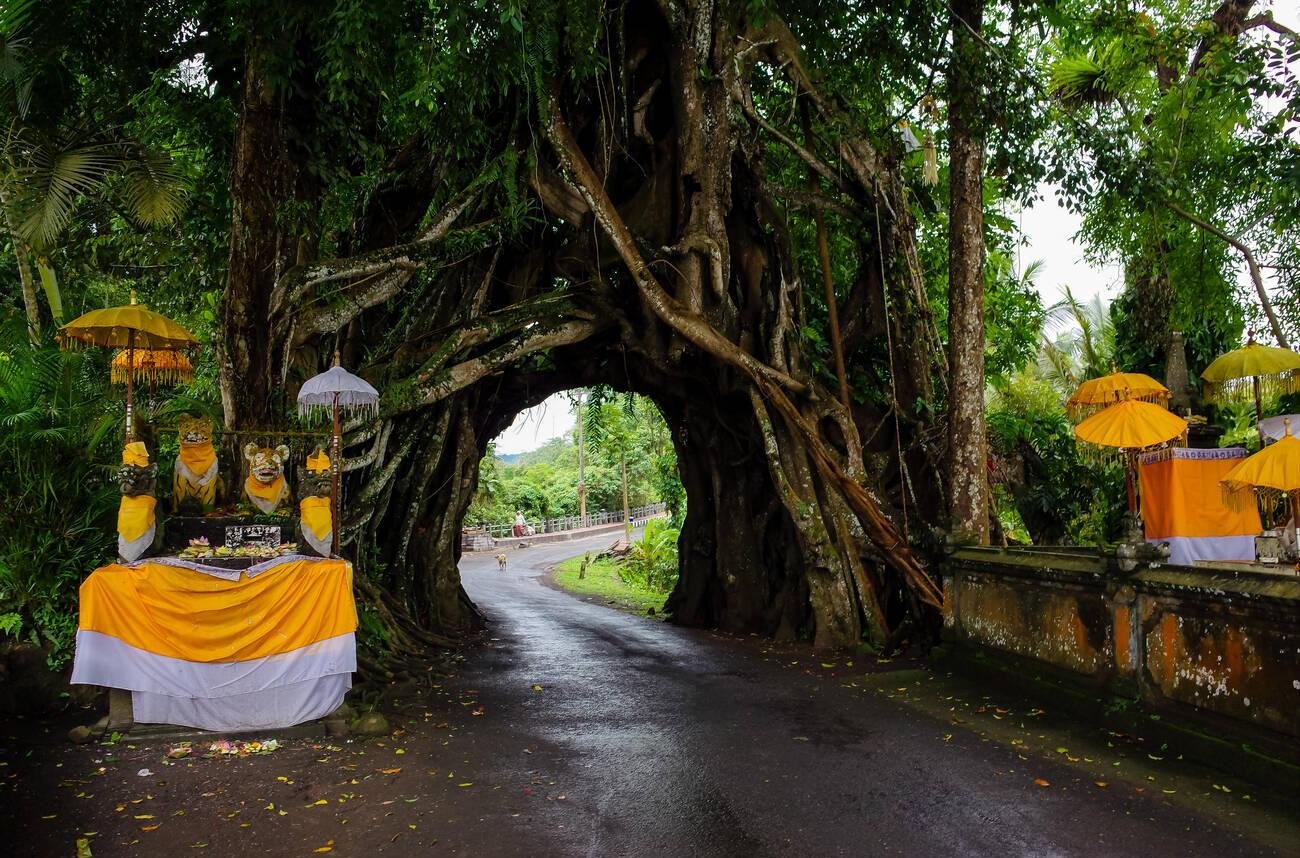
The Bunut Bolong tree is not just a natural marvel but a cultural and spiritual icon in Bali. Its unique structure, combined with the rich myths and taboos associated with it, makes it a fascinating destination for those looking to explore Bali’s hidden gems. Plan your visit to Bunut Bolong and immerse yourself in the mystical charm of this sacred tree, a true testament to Bali's enchanting allure.



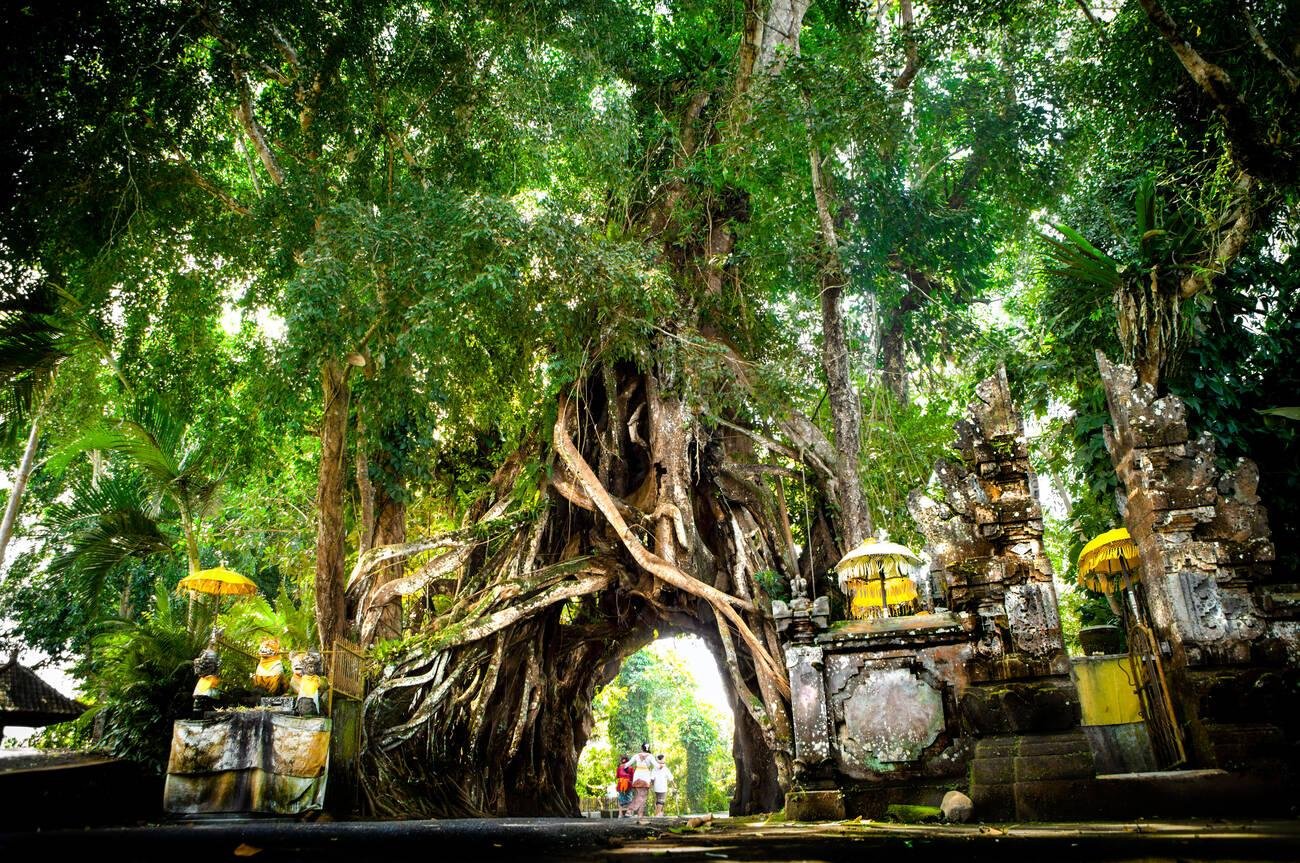
 Billy Bagus
Billy Bagus
 May 17, 2024
May 17, 2024





